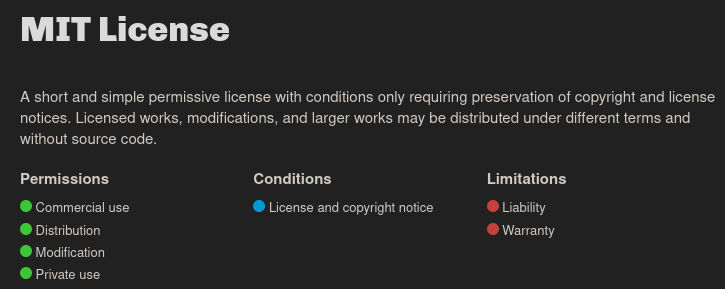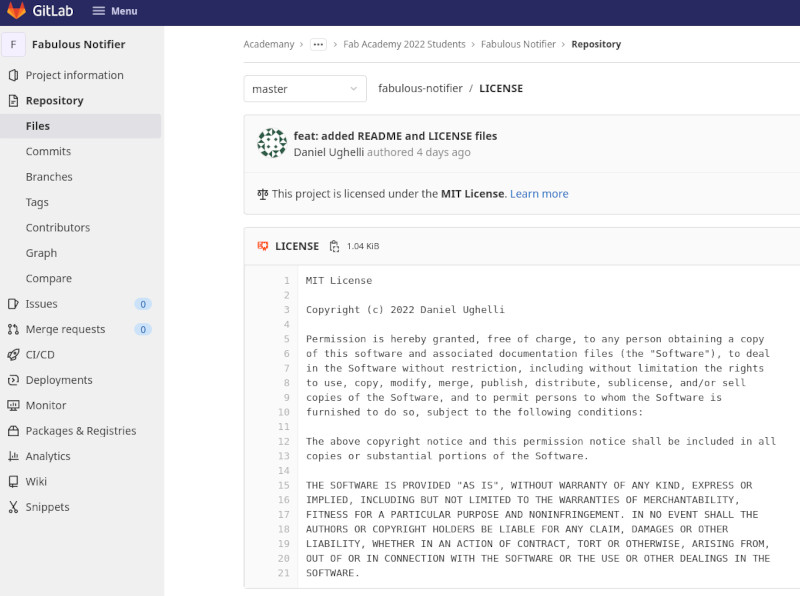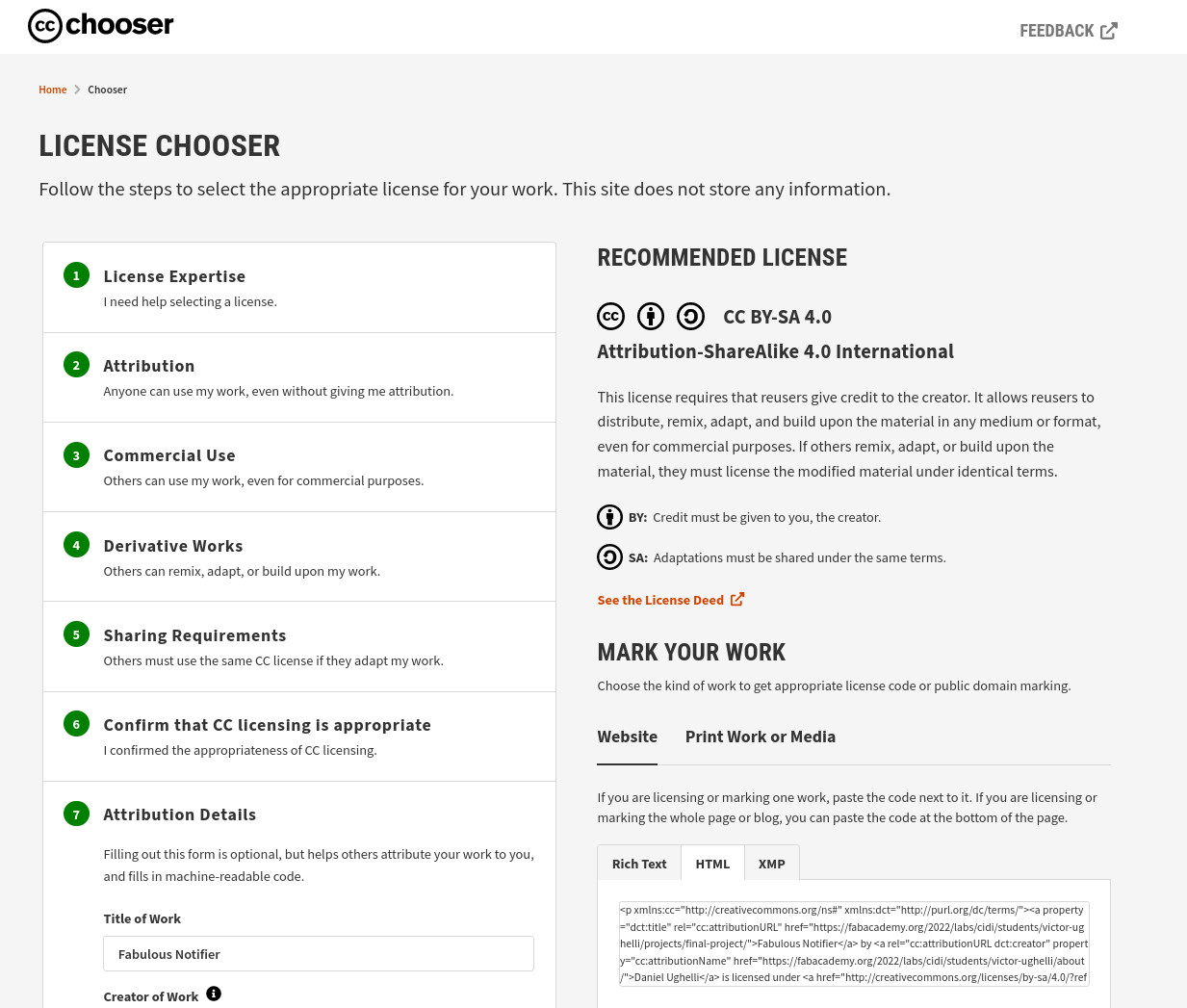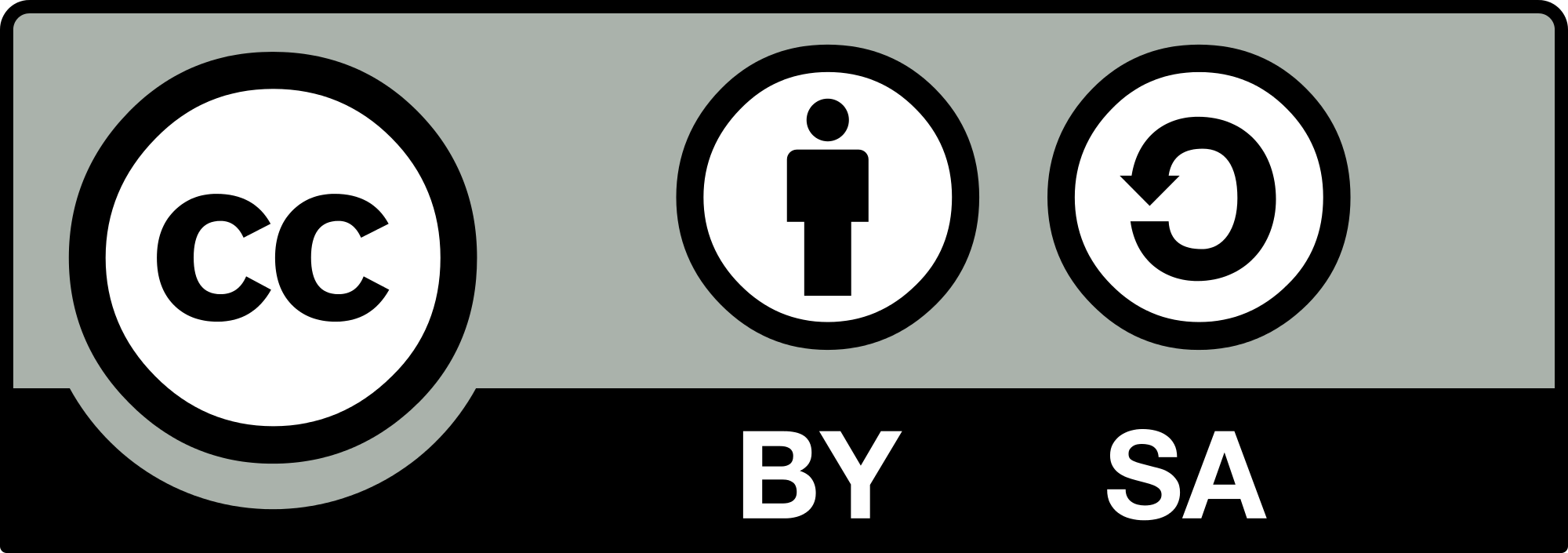17. Invention, Intellectual Property, and Income¶
During this week I’ve made some good progress in my final project, specially in the electronics, networking and interfaces areas. But now it’s time to start thinking in licenses, dissemination plans and to start working on presentation drafts. I’ll talk more about it below.
Licensing my Final Project¶
Since I have 2 independent projects - a hardware device and an Android app - I’ve chosen different licenses for each one of them.
Android App¶
Let’s start with software. I need an app for tracking notifications, configuring actions and send signals via bluetooth to the hardware. Although there are some alternatives available, I decided to create my own app for the following reasons:
- I couldn’t find a reliable app to do that. One of the most useful apps I’ve found is Notiduino, as shown in the following tutorial:
The app has been created by “Geny studio”, but I couldn’t find more information about the app nor the developer. The app is not even listed in the Play Store anymore, the only way to get it is by downloading the .apk installer from external websites. Installing apps from external sites is risky because you don’t really know what’s the real content of the apk file.
- Tracking notifications has some privacy concerns especially if you want to be sure that your notifications are not being sent to external servers. Even if the app is listed on the Play Store, it is very difficult to know what’s going on with your data if the source code of the app is not publicly available.
So… I created my own app using React Native and put it in a public repository. In this way, other people can reuse the app, know what’s going on under the hood and be able to debug it themselves if something important goes wrong. In case some vulnerabilities are found in the app, the community itself could report it or even fix it.

I’ve found a useful website for choosing open source licenses that is called choosealicense.com. It clearly explains the implications of choosing different licenses.

To make things as uncomplicated as possible for everyone, I chose the MIT license for this project, which is pretty straightforward, clear and permissive. Other users can commercialize, distribute, modify and use. The only requirement is to preserve the copyright and license notices. Most of the dependencies in this project are licensed under this license so I chose the same one for consistency and simplicity.

The license notice is available at the gitlab repo in a file called LICENSE.
Hardware¶
I decided to go with Creative Commons licenses for the hardware part of this project. Creative Commons (CC) is an American non-profit organization devoted to expanding the range of creative works available for others to build upon legally and to share. Creative Commons licenses free of charge to the public and they allow creators to communicate which rights they reserve, and which rights they waive for the benefit of recipients or other creators.

They do not replace copyright, but are based upon it. They replace individual negotiations for specific rights between copyright owner (licensor) and licensee, which are necessary under an “all rights reserved” copyright management, with a “some rights reserved” management employing standardized licenses for re-use cases where no commercial compensation is sought by the copyright owner. The result is an agile, low-overhead and low-cost copyright-management regime, profiting both copyright owners and licenses.
The creative commons website has a useful tool for choosing the right license and obtain the license logo for including in websites and documents.

They are working in another tool that makes more specific questions for helping you to choose a license. The beta version is available here

I decided to go with a Attribution-ShareAlike 4.0 International license. This license requires that reusers give credit to the creator. It allows reusers to distribute, remix, adapt, and build upon the material in any medium or format, even for commercial purposes. If others remix, adapt, or build upon the material, they must license the modified material under identical terms.

Fabulous Notifier by Daniel Ughelli is licensed under Attribution-ShareAlike 4.0 International
Dissemination Plan¶
The initial steps of the dissemination plan would be presenting the initial version of the product to friends and colleagues in order to get some feedback. I could build some additional units of this product and select some people to test it. The main idea is to improve both the ui/ux of the app and the appearence and usability of the device. By doing this, I also will share my experience and knowledge about working in digital fabrication with others. Once the product is sufficiently improved I’ll evaluate the possibility of producing more units to sell.
Although the applications of this specific project are more for personal use (since it tracks personal notifications), I could start working on a more general version of this product. Instead of using a bluetooth module and showing personal notifications, this device could use a wifi module (such as the ESP8266) and show more general notification/states. This alternative version could be useful for notifications in offices and coworking spaces.
Presentation Slide¶
During this week I also work in a draft of the presentation slide. I prepared this presentation using GIMP, it is pretty basic for the moment since it is just a draft and I haven’t finished my final project yet. But I think I will redo this slide in Inkscape, because it offers more tools for aligning and placing objects in the document.
